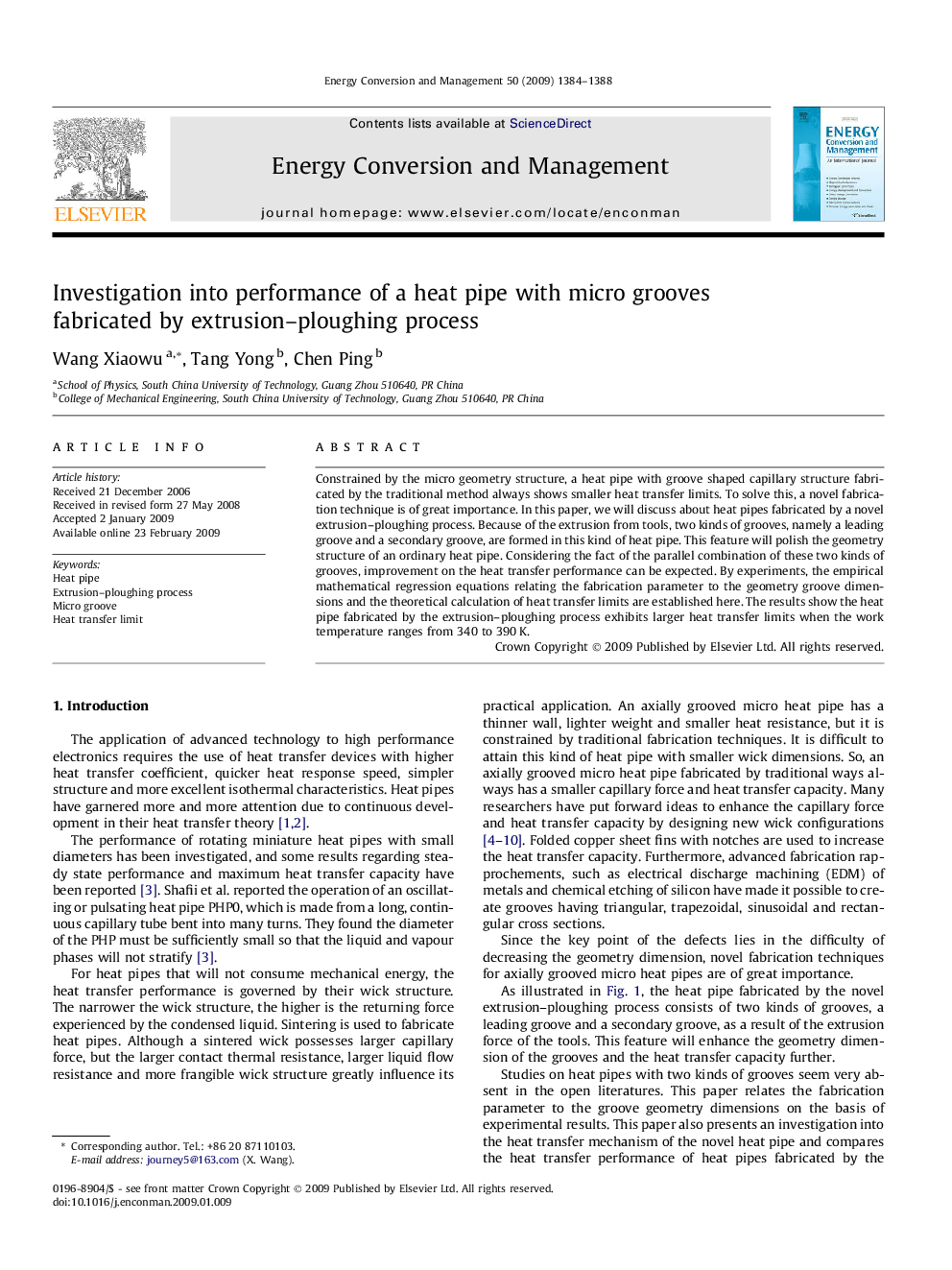| Article ID | Journal | Published Year | Pages | File Type |
|---|---|---|---|---|
| 765074 | Energy Conversion and Management | 2009 | 5 Pages |
Constrained by the micro geometry structure, a heat pipe with groove shaped capillary structure fabricated by the traditional method always shows smaller heat transfer limits. To solve this, a novel fabrication technique is of great importance. In this paper, we will discuss about heat pipes fabricated by a novel extrusion–ploughing process. Because of the extrusion from tools, two kinds of grooves, namely a leading groove and a secondary groove, are formed in this kind of heat pipe. This feature will polish the geometry structure of an ordinary heat pipe. Considering the fact of the parallel combination of these two kinds of grooves, improvement on the heat transfer performance can be expected. By experiments, the empirical mathematical regression equations relating the fabrication parameter to the geometry groove dimensions and the theoretical calculation of heat transfer limits are established here. The results show the heat pipe fabricated by the extrusion–ploughing process exhibits larger heat transfer limits when the work temperature ranges from 340 to 390 K.
